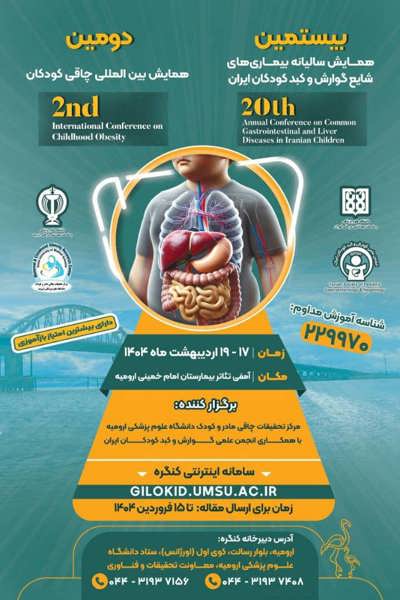0% Complete

صفحه اصلی
/
بیستمین همایش سالیانه بیماری های شایع گوارش و کبد کودکان ایران و دومین همایش بین المللی چاقی کودکان
نویسندگان :
کلمات کلیدی :
چکیده :
لیست مقالات بایگانی شده
Faezeh Ghalichi - Alireza Ostadrahimi
Sakineh Nouri saeidlou - Mohammad Yousefi - Samaneh Sepahi
Paniz Bahari - Sanaz Yari - Reza Samarbakhsh - Sara Arefhosseini
Zohreh Dehghan Harati - Fatemeh Dehghan Harati
Ladan Soltanzadeh - Ali Mirzaee AghGonbad - Sulmaz Soltanzadeh
Sadra Khodaei Alamdari - Faezeh Ghalichi - Negar Moosaee
Sanaz Yari - Paniz Bahari - Sara Arefhosseini
Fatemeh Pazhouman - Amirhossein Moussavi moghanjougi - Khadijeh Mirzaie - Ameneh Elgeztin

